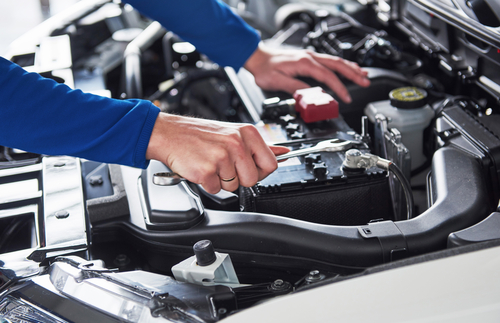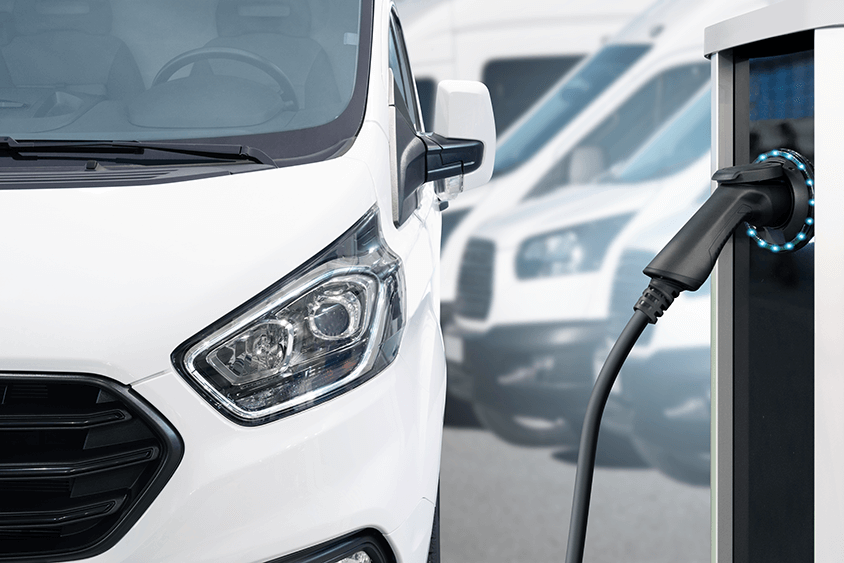What is Telematics and Can It Improve Your Fleet Management?
Written by: Simon Pavey, Last updated:5th January 2024

Telematics is a big deal for the fleet sector. Deploying this technology lets you transform your fleet management, giving you better insight into every part of your operation. This can be used for everything from better route planning to ensuring safer driving.
If you aren’t using telematics, you’re in an increasingly small minority. According to Teletrac Navman, 86% of fleets used this technology in 2019. That’s up from just 48% two years earlier, showing just how quickly telematics is growing.
So what is telematics, and what do you need to know to make it a success?
What is a telematics box?
A telematics box is a small device that’s fitted to your vehicles. It’s sometimes called a ‘black box’ and it works in much the same way as one on an aeroplane. It collects a wide range of data about the vehicle, letting you know exactly what it’s been up to.
Key information collected by telematics systems include:
- Location
- Speed
- Driver inputs
- Fuel consumption
- Vehicle faults
- Idling time
These are just a few of the systems telematics technologies can monitor. With an advanced solution, you can keep an eye on every aspect of your fleet’s performance and your drivers’ behaviour.
How do telematics work?
There are a few key parts to any telematics system. The first is a GPS tracker. This monitors the vehicle’s movements and provides you with a clear map of exactly where it’s been and how long it took to get there.
Secondly, there are a range of sensors hooked up to various parts of the vehicle to gain further information. These can measure throttle, braking and steering inputs, for example, but it doesn’t stop there. With the right sensors, you can measure everything from when the doors are opened to the temperature of a trailer.
Finally, there’s a mobile data connection to transmit the data back to your system. After all, the info is useless unless it can be collected and analysed. This typically uses a 4G mobile connection or a radio network, though some can even connect via satellite.
All this data is then fed in real time back to your business, where it’s evaluated by fleet management software. This then provides insights into your fleet’s activities and highlights recommendations for improvements in a range of areas.
Why you should be using telematics
Having a telematics device installed therefore offers many benefits to your business. For instance, insurance companies often offer discounts to customers who have this technology installed. This means you can start saving money even before the key is turned in the ignition.
However, the advantages of telematics are very wide-ranging. Here are some of the key ways it can give your fleet a boost.
1. Reduced fuel costs

Cutting your fuel consumption is a key benefit of telematics. The technology does this in a number of ways.
For instance, data from GPS systems can be used to improve your planning. Fleet management software can identify more efficient routes that cut out unnecessary mileage or minimise time spent in traffic with the engine idling.
Telematics also helps your drivers understand how they can change their behaviour to use less fuel. If an employee is accelerating or braking too harshly, for example, this can be picked up by the black box’s sensors. This information can then be used to give them advice on how to adopt a smoother driving style.
Indeed, according to Verizon Connect, users of GPS tracking technology report an 8% drop in their fleet’s fuel consumption since adopting the technology.
2. Safer driver behaviour
It’s not just improving fuel consumption where driver behaviour can be improved. The use of telematics also plays a vital role in making sure your drivers are as safe as possible on the road.
One of the simplest ways it does this is by making drivers aware their actions are being monitored. This is often enough to change their behaviour, encouraging them to take fewer risks such as speeding and steering erratically.
If the system does detect concerning driver inputs, this allows fleet managers to step in and offer training. They can even deliver a warning if an individual is found to be frequently breaking the rules of the road.
3. Improved maintenance

Telematics boxes are often connected directly to a car’s main computer. This allows them to access and report on any error codes or other diagnostics flagged by the vehicle’s sensors.
Being able to view data on wear and tear in real time means you can schedule maintenance proactively. You can set up systems to program a service based on mileage, time or engine use, for example. This is much more accurate than relying on manual tracking and greatly reduces the chances of anything going wrong.
It also allows you to spot faults as soon as they occur, removing the need to rely on driver reports for any issues such as engine warning lights. Therefore, you can fix these problems before they have a chance to lead to a breakdown or unplanned time off the road.
4. Better planning and management
We noted above how telematics can help optimise route planning for fuel efficiency, but this is far from the only way it can improve your fleet management.
For example, it can provide firms with a clear, accurate picture of exactly how long employees spend behind the wheel. This can be vital in ensuring you’re meeting rules for driving hours and keeping the correct records.
Elsewhere, if someone is using a vehicle on their own time without permission, you can spot this easily. You can even set limits on where a vehicle is allowed to be, so you can be alerted by the GPS systems if a driver travels outside this perimeter.
The benefits of telematics solutions are clear. If you’d like to learn more about these options and what options are available, get in touch with our experts to see how you can save time and money.
back



